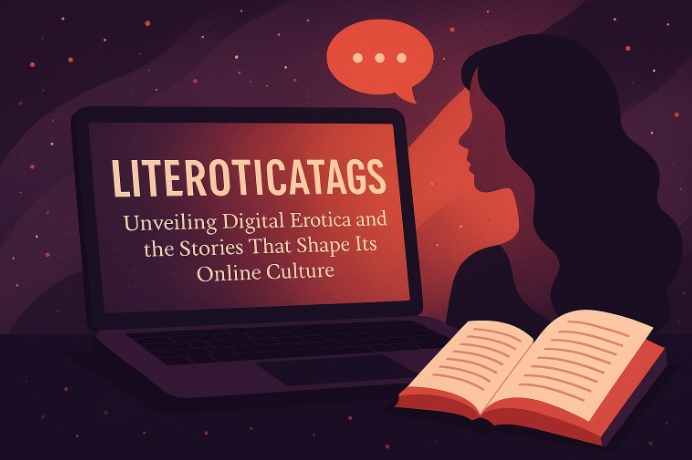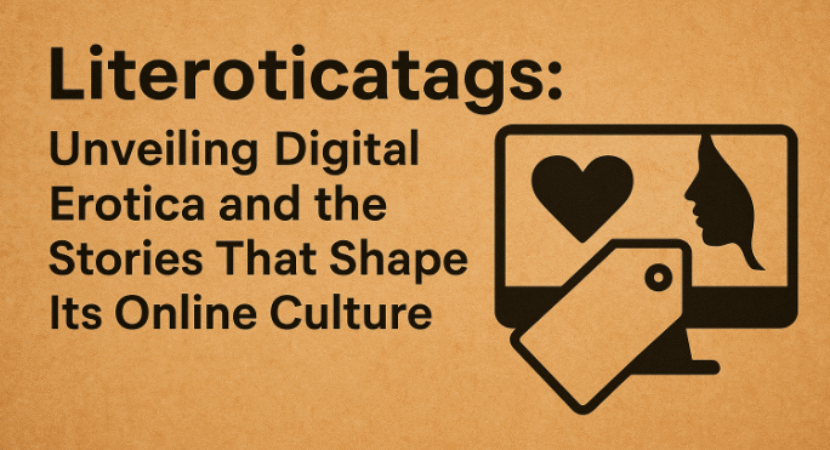Literoticatags play a central role in today’s digital landscape, where niche storytelling platforms are flourishing. Among them, Literotica stands out as one of the most popular hubs for adult fiction. What truly sets it apart, however, is its dynamic and user-driven tagging system—widely known within the community as Literoticatags—which, in turn, not only enhances the overall user experience but also, consequently, fosters greater engagement.
In this article, we’ll dive into what Literoticatags are, explore why they’re essential for the platform’s ecosystem, and examine how they’re actively reshaping the landscape of online erotic storytelling.
What is Literoticatags and Why Does It Matter?
Literoticatags is about more than just steamy stories—it’s a creative art form. It combines strong storytelling, real emotions, and themes that reflect the highs and lows of being human. Over time, erotica has shown how society’s views on sex, love, and self-expression have changed.
Moreover, this genre goes beyond being just a guilty pleasure—it opens up plenty of space for creativity. In particular, writers tell deep, personal stories through short stories, poetry, flash fiction, or novellas, using erotica as a way to express themselves respectfully and thoughtfully. Ultimately, it celebrates consensual exploration and actively encourages both writers and readers to connect with their emotions, explore their desires, and let their imaginations run free.

Why Tags Are Crucial in Erotic Storytelling
In erotic storytelling, tags are more than simple labels—they’re essential tools that, in fact, shape the entire reading experience. Given the wide range of preferences, fantasies, and boundaries in this genre, tags, therefore, act as a bridge between creators and their ideal audience.
1. Enhancing Reader Experience
Erotic content is highly personal. Tags help readers quickly find the exact themes, kinks, dynamics, or scenarios they’re comfortable with or curious about. This not only improves satisfaction but also builds trust between the platform and its users. Instead of guessing, readers can explore confidently, knowing what to expect.
2. Empowering Writers with Precision
For writers, tags provide a powerful way to define their story’s identity. Specifically, by using labels like “slow burn,” “BDSM,” “taboo romance,” or “consent-focused,” authors can effectively market their stories to the right niche. As a result, they not only boost visibility but also attract a more engaged and appreciative audience.
3. Creating a Safe Space Through Clarity
Erotica often explores sensitive or intense topics. Tags provide transparency, which is key for consent and emotional safety. By clearly labeling content, creators show respect for readers’ boundaries and trigger sensitivities, making the genre more inclusive and respectful.
4. Fueling Community Discovery
Tags also power community interaction. On platforms like Literotica, fans often search by tag to follow specific storylines or favorite tropes. This creates micro-communities within the site—people who love the same themes can engage, recommend, and connect.
5. Helping Platforms Organize and Moderate
From a technical side, tags help platforms categorize content effectively. They improve search algorithms, user recommendations, and even moderation by flagging content that might need review based on sensitive topics or guidelines.
Most Popular Literoticatags Categories
- Genres: Romance, Fantasy, Sci-Fi, Horror
- Relationship Types: Friends-to-Lovers, Boss/Employee
- Kinks & Fetishes: Voyeurism, BDSM, Foot Fetish
- Identity Tags: LGBTQ+, Transgender, Interracial
- Style Tags: First Person, Flash Fiction, Epistolary
How Literoticatags Have Evolved
Over the years, Literoticatags have transformed from simple content labels into a powerful system that shapes the way stories are discovered and consumed. This evolution reflects not just the growth of the platform, but also changing attitudes toward sexuality, inclusivity, and digital storytelling.
1. From Basic Categories to Niche Interests
In the early days, tags were limited to broad categories like romance, fetish, or fantasy. However, as the platform expanded, so did the diversity of its audience. As a result, users began requesting more specific tags to better reflect their unique preferences—everything from “enemies to lovers” to “consensual non-consent.”
2. Driven by Community Demand
Unlike traditional genres, erotic storytelling is deeply influenced by reader engagement. Over time, Literotica’s community started playing a major role in shaping the tag ecosystem. Popular storylines inspired new tags, while underrepresented topics gained visibility through consistent user feedback.
3. More Than Just Labels—Now a Discovery Engine
Gradually, tags shifted from being static labels to becoming dynamic tools. They now function as search filters, content warnings, story summaries, and even mood indicators. This helps readers navigate complex stories and discover content that matches their emotional or thematic preferences.
4. Reflecting Social Progress and Consent Culture
As conversations around sex positivity and consent evolved, so did the tags. Today, many tags reflect a more respectful and inclusive view of sexuality. Tags like “aftercare,” “LGBTQ+,” and “consent-focused” are not only common but celebrated for helping readers find stories that align with their values.
5. A Living System That Keeps Growing
In the end, Literoticatags continue to evolve with the times. As new trends, fantasies, and conversations emerge, the tag system grows alongside them—making the platform more responsive, inclusive, and tailored to individual needs.
Final Thoughts
Literoticatags are more than keywords—they shape the way we experience and write adult stories online. As platforms like Literotica grow, tags will continue to define the future of erotic storytelling.
Done right, tags offer freedom, discovery, and community. Done wrong, they can harm, confuse, or exclude. The goal is to create a tagging culture that’s respectful, inclusive, and empowering.
FAQs about Literoticatags
1. What are Literoticatags used for?
For example, they help readers find stories that match their interests and help writers target their ideal audience.
2. Are all tags user-generated?
Yes, most are added by writers or suggested by readers, though moderators review them for accuracy and appropriateness.
3. Can tags be misleading?
Unfortunately, yes. Mislabeling stories can lead to bad experiences. That’s why responsible tagging is so important.
4. Do tags affect story visibility?
Absolutely. Well-tagged stories appear more often in searches and gain higher engagement.
5. Are tags moderated on Literotica?
Yes. Tags that promote illegal or offensive content are flagged and removed to keep the platform safe.


Reply